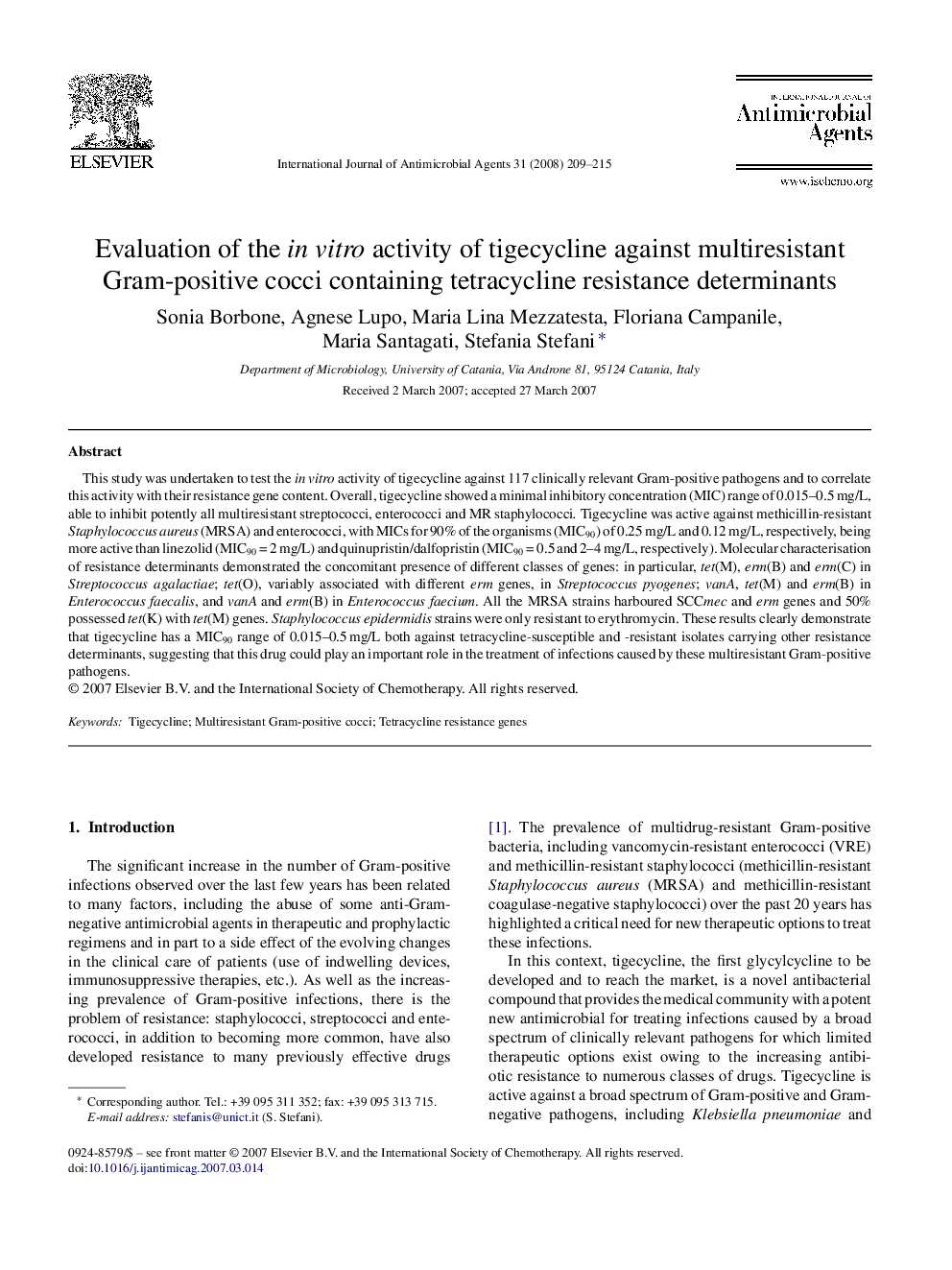| Article ID | Journal | Published Year | Pages | File Type |
|---|---|---|---|---|
| 3360828 | International Journal of Antimicrobial Agents | 2008 | 7 Pages |
Abstract
This study was undertaken to test the in vitro activity of tigecycline against 117 clinically relevant Gram-positive pathogens and to correlate this activity with their resistance gene content. Overall, tigecycline showed a minimal inhibitory concentration (MIC) range of 0.015-0.5Â mg/L, able to inhibit potently all multiresistant streptococci, enterococci and MR staphylococci. Tigecycline was active against methicillin-resistant Staphylococcus aureus (MRSA) and enterococci, with MICs for 90% of the organisms (MIC90) of 0.25Â mg/L and 0.12Â mg/L, respectively, being more active than linezolid (MIC90Â =Â 2Â mg/L) and quinupristin/dalfopristin (MIC90Â =Â 0.5 and 2-4Â mg/L, respectively). Molecular characterisation of resistance determinants demonstrated the concomitant presence of different classes of genes: in particular, tet(M), erm(B) and erm(C) in Streptococcus agalactiae; tet(O), variably associated with different erm genes, in Streptococcus pyogenes; vanA, tet(M) and erm(B) in Enterococcus faecalis, and vanA and erm(B) in Enterococcus faecium. All the MRSA strains harboured SCCmec and erm genes and 50% possessed tet(K) with tet(M) genes. Staphylococcus epidermidis strains were only resistant to erythromycin. These results clearly demonstrate that tigecycline has a MIC90 range of 0.015-0.5Â mg/L both against tetracycline-susceptible and -resistant isolates carrying other resistance determinants, suggesting that this drug could play an important role in the treatment of infections caused by these multiresistant Gram-positive pathogens.
Related Topics
Life Sciences
Immunology and Microbiology
Applied Microbiology and Biotechnology
Authors
Sonia Borbone, Agnese Lupo, Maria Lina Mezzatesta, Floriana Campanile, Maria Santagati, Stefania Stefani,
